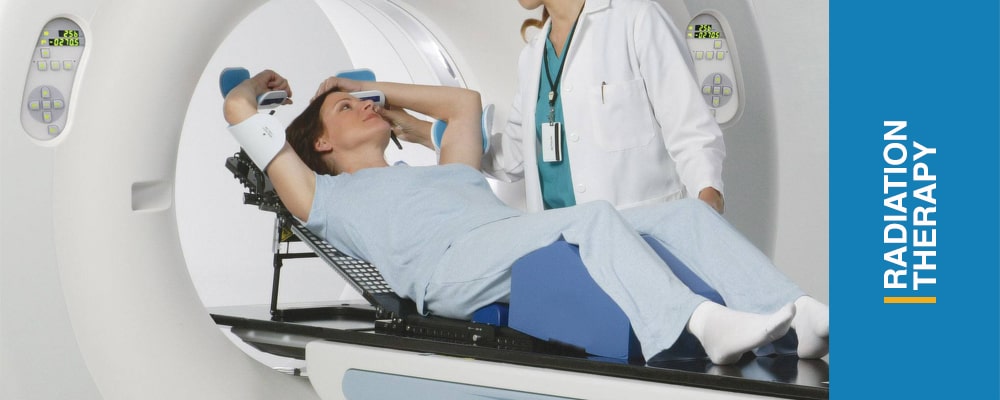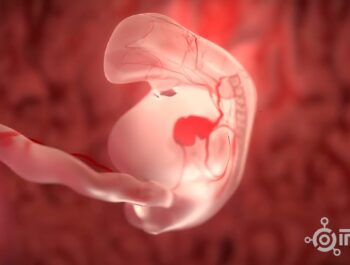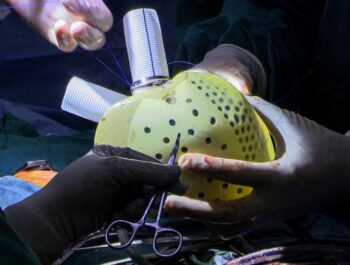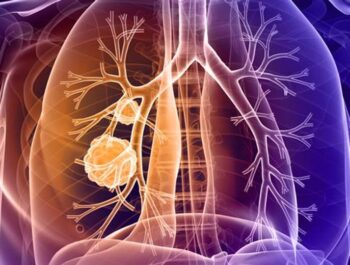
What is radiation therapy?
4min ReadRadiation therapy is a cancer treatment that uses concentrated radiation beams to kill cancer cells. Most of the time the term refers to external beam radiation therapy. During this type of radiation, the high-energy beams come from a machine outside of your body that aims the beams at a precise point on your body.
Why it’s done
More than half of all people with cancer receive radiation therapy as part of their cancer treatment. Doctors use it to treat just about every type of cancer. Radiation therapy is also useful in treating some noncancerous (benign) tumors. Radiation therapy can be used during different stages of cancer treatment and for different outcomes. Radiation therapy can be used:
- to alleviate symptoms in advanced cancer
- as the only treatment for cancer
- in conjunction with other cancer treatments
- to shrink a cancerous tumor before surgery
- to kill any remaining cancer cells after surgery
Risks
Fatigue and hair loss are common side effects of radiation therapy. Hair loss only happens on the part of the body being treated. It also affects skin cells. Skin changes may include:
- blistering
- dryness
- itching
- peeling
You may notice some other side effects like:
- diarrhea
- earaches
- mouth sores
- dry mouth
- nausea
- sexual dysfunction
- sore throat
- swelling
- trouble swallowing
- urination difficulties, such as painful urination or urinary urgency
- vomiting
Most of these side effects will go away within 2 months after the treatment is complete. In some cases, there are some side effects that last longer or maybe appear six or more months after treatment is finished. These late side effects may include:
- mouth problems
- joint problems
- lymphedema, or tissue swelling
- infertility
- possible secondary cancer
How to prepare
The first step in radiation treatment is determining that it’s the right form of treatment for you. Your doctor will also determine dosage amounts and the frequency of radiation best suited for your cancer type and stage.
Sometimes your doctor may decide that radiation therapy is best suited for use at a later stage, so you may receive other cancer treatments first. Before you undergo external beam radiation therapy, your health care team guides you through a planning process to ensure that radiation reaches the precise spot in your body where it’s needed.
Planning typically includes:
Radiation simulation
- You’ll lie on the same type of table that will be used for your treatment.
- Lying still at the proper angle is very important for treatment success, so your healthcare team may use cushions and restraints to position you at the best angle for treatment.
- You will then undergo CT scans or X-rays to determine the full extent of your cancer and where the radiation should be focused on.
- After determining the best location for radiation treatment, your treatment team will then mark the area with a very small tattoo. This tattoo is usually the size of a freckle. In certain cases, a permanent tattoo is not needed.
- You’re now ready to begin radiation therapy.
Planning scans
Your radiation therapy team will have you undergo a computerized tomography (CT) scans to determine the area of your body to be treated.
What to expect
External beam radiation therapy is usually conducted using a linear accelerator — a machine that directs high-energy beams of radiation into your body.
As you lie on a table, the linear accelerator moves around you to deliver radiation from several angles. The linear accelerator can be adjusted for your particular situation so that it delivers the precise dose of radiation your doctor has ordered.
Radiation therapy typically takes treatment sessions five days a week for 1 to 10 weeks. The total number of treatments depends on the size and type of cancer. Each session usually takes about 10 to 30 minutes. Often, the individual is given each weekend off from therapy, which helps with the restoration of normal cells.
You should feel no pain during this test. You’ll also be able to communicate with your team via the room’s intercom, if necessary. Your doctors will be nearby in an adjacent room, monitoring the test.
Following up after radiation therapy
During the weeks of treatment, you’ll undergo several imaging scans and tests so your doctors can observe how well your cancer has responded to radiation therapy. These scans and tests can also tell them if any changes need to be made to your treatment.
If you experience side effects from radiation — even if they’re expected — tell your healthcare provider at your next appointment. Sometimes, even small changes can make a big difference in lessening side effects. At the very least, you may be given advice or medication to help ease the discomfort.













Reviews
Number of pending reviews174